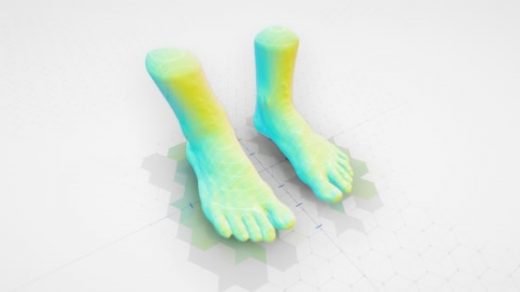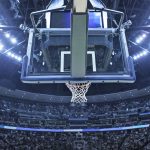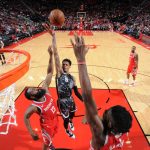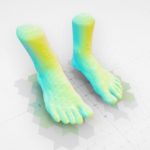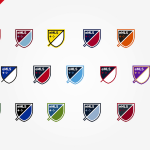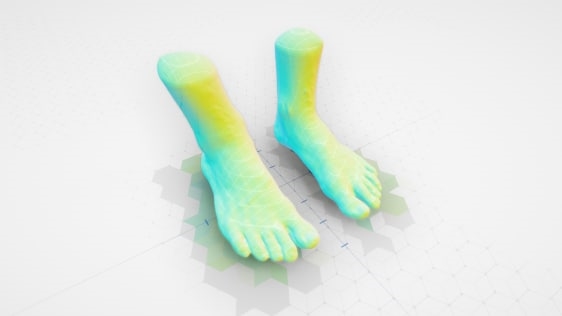If The Shoe Fits: How HP Is Helping NFL Players Avoid Injury
Consider the NFL player’s shoe. Aside from being a sponsorship opportunity, the lowly cleat is the player’s contact with the ground, a safeguard that can help to absorb the incredible force these giant men create when they run, or a dangerous vulnerability that can fail, leading to all kinds of injuries.
Over the years, the NFL has done significant amounts of research into what makes a good cleat and what doesn’t, and until this year, it insisted on putting up a poster in team locker rooms with the specific shoes the league’s scientists concluded were too risky for these million-dollar gridiron behemoths to wear. This year, for the first time, their research, shared with footwear manufacturers, led the league to conclude no cleats made for the NFL were too unsafe to take into battle on Sunday.
But that’s not enough to help keep these quarterbacks and wide receivers and linebackers on the field and performing at their peak without taking unnecessary risks. Now, the NFL has embarked on a project in conjunction with HP that helps each player find the cleat that best fits his own feet, thanks to a highly accurate 3D scanning system that’s been set up in every team locker room. And soon, the project could be expanded to incorporate additional criteria like which position he plays–which can impact the type of action he wants the shoe to best support.
“Our biggest priority is the health and safety of our players,” says Jennifer Langton, the NFL’s vice president for player health and safety. “We have world-class scientists who review injuries, look at trends and patterns, and aid us in diagnosing, treating, and preventing injuries that are sustained by players. It’s all data-driven.”
Notwithstanding the NFL’s well-chronicled struggles with tackling its concussion epidemic and increasing instances of CTE amongst its players, it has set up a series of innovation challenges aimed at developing technology that leads to equipment that can protect players from a wide range of injuries. In the case of footwear, Langton says, the goal was both to increase performance and mitigate against things like sprained ankles.
According to Rich Kent, a member of the NFL’s Musculoskeletal Committee and a professor of mechanical and aerospace engineering, biomedical engineering and emergency medicine at the University of Virginia, the league’s scientists have been researching biomechanical metrics that help them understand how to design footwear built for injury prevention. That work led to testing that could help determine how aggressive a cleat is–giving the player the traction they need to perform–while also not passing on damaging forces to the feet. “It’s like a seat belt,” says Kent, whose previous career was in auto safety. “You want a restraining force, but not ‘hurt you’ force.”
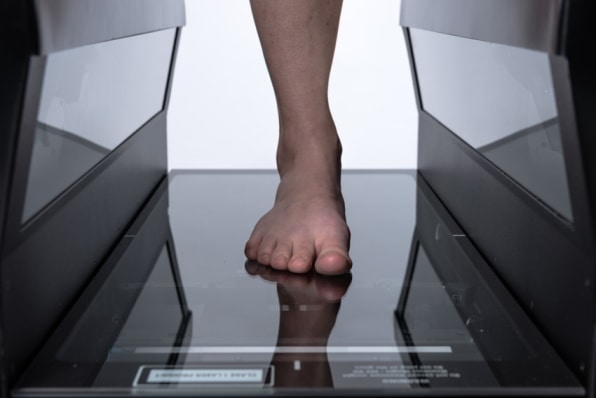
Volumetric Approach
The partnership with HP is an extension of that work, the idea being that it doesn’t matter how advanced a shoe is when it comes to providing traction or its structural properties if it doesn’t actually fit properly. “If it’s not appropriately fit to the three-dimensional shape of the foot,” he says, “that’s sub-optimized. That’s why we’ve been aggressive in pushing this forward.”
Aiming to end up with a new system that could quickly produce an accurate volumetric measurement of players’ feet, the NFL went looking at pretty much any technology company with a 3D scanning system. There wasn’t much on the market, save for a few in Europe that were commonly used for high-end running shoes, ski boots, or hiking boots. None of that was appropriate for the NFL, Kent says.
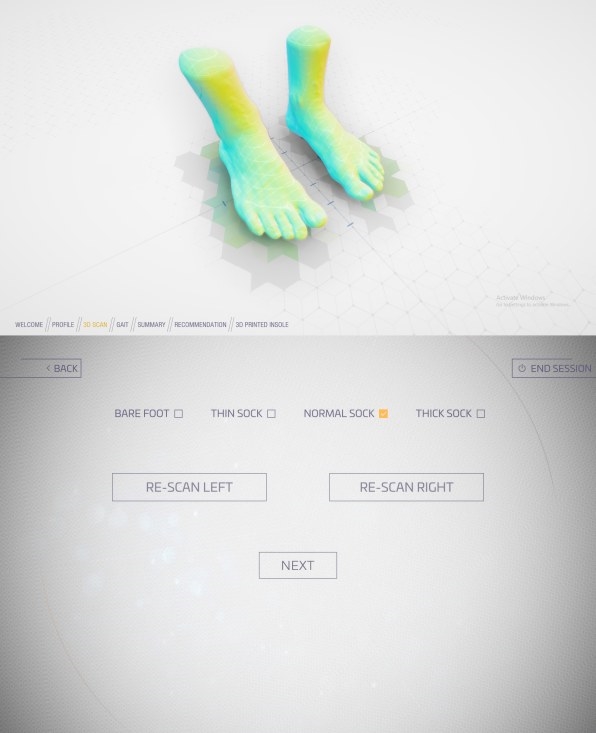
The league brought in several scanning systems and conducted a year-long pilot project with every NFL team to get a sense of usability, portability, and geometric accuracy. And one of the most important criteria was whether a technology company had the ability, if chosen, to roll out its systems to all 32 teams immediately. Only HP satisfied both the technological specifications and had the bandwidth required to go league-wide right away.
Already, HP’s immersive computing group had been developing a 3D scanning platform known as FitStation that was being used in some shoe stores to create custom, 3D printed insoles. The company’s goal was to move to doing custom shoes.
What HP offered was a three-module system–a 3D scanner, a pressure plate, and easy-to-use software–that could be set up quickly and easy in any locker room.
The goal was to come up with a ranked set of recommended shoes based on any player’s individual feet, and a desire to avoid the two main types of foot injuries–a Jones Fracture, when the foot is too big for the bottom of the cleat, and turf toe, when a player essentially stubs their toe after quick cut on artificial turf. “When you think about a 350-pound player,” says Anouk Patty, the head of strategic partnerships in HP’s immersive computing group (and a former U.S. ski team member), you have to think about “the torque and pressure and power they put on their feet, which are the last point of contact they have with the ground.”
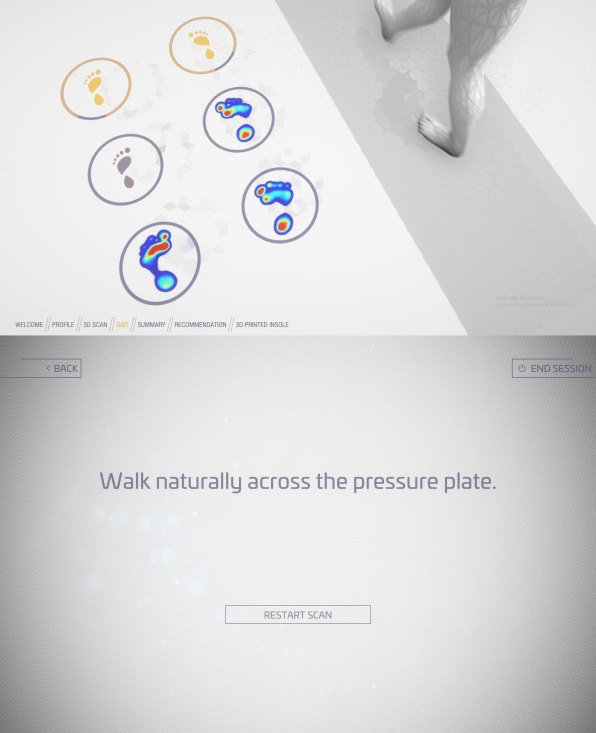
In other words, you have to think about how to keep these multi-million dollar athletes on the field instead of sitting on the bench because of injury.
The FitStation system is designed to do a quick scan–it takes no more than a few seconds per foot–as well as measure players’ gait on a pressure plate, and then return results immediately afterwards that show each foot’s width, length, arch length, and height, and categorize the gait. The whole process takes about two minutes.
Based on that information, the system then automatically ranks the top cleats from three manufacturers–Nike, Adidas, and Under Armour–that best fit the player’s feet.
Patty says she expects every NFL player to have their feet scanned by this spring.
In order to be able to recommend the shoes that best fit each player, she explained that the NFL worked with the three shoe companies to compile a database of every possible cleat that was available to NFL players. Counting each brand, size, and model, that’s about 2,000 different pairs. The league then scanned each of the shoes in order to get exact volumetric data that could later be compared to that of the players’ feet.
Although the ranked results initially are brand-agnostic, HP knows some players have shoe contracts, so it built in a setting that allows them to get recommendations from only their brand. Still, Patty says, about 80% of all NFL players are signed with Nike, though she added that Adidas and Under Armour are “making inroads” with football players.
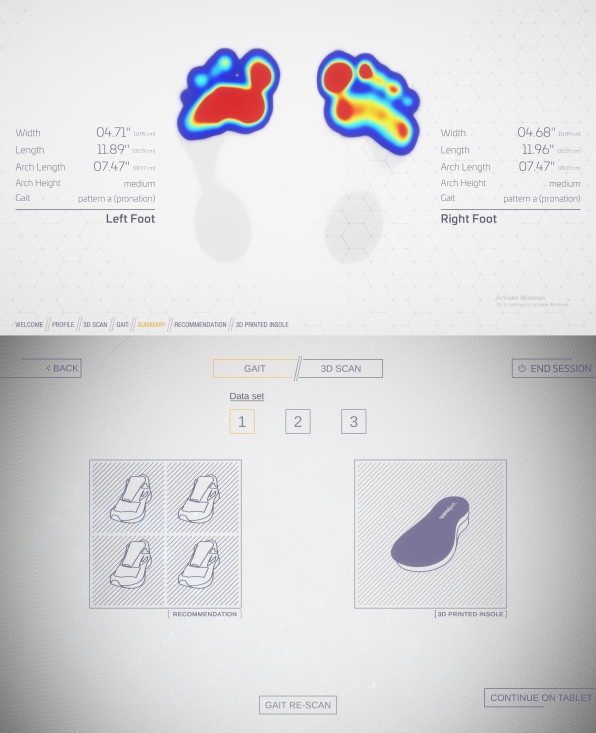
A Tool For Equipment Managers
For now, it’s too early to tell if the system will result in fewer injuries, since the platform has only been in NFL locker rooms since October. Kent expects data will be available at some point soon after he and his fellow researchers have a chance to compare players’ injury rates after using FitStation-recommended shoes to that of a year earlier.
It’s not totally clear that the system will make things better for players, but it seems like it’ll definitely upend the dynamic in the locker room.
When asked how much closer to the perfect fit the HP system can get, Patty demurred a bit, noting that the platform offers several advantages. First, she says, is time savings. Previously, she said, it can take up to 15 minutes a pair to try on shoes, and they may have needed to try on as many as 15 pairs before finding one they like. “If they can come in and get scanned in two minutes and then see the five pairs that fit best,” Patty says, “that’s a huge time savings.”
Second, she says she has seen some cases already where players have changed their shoe choice based on the system’s full foot volumetric recommendation.
But she also said that this isn’t entirely about the players.
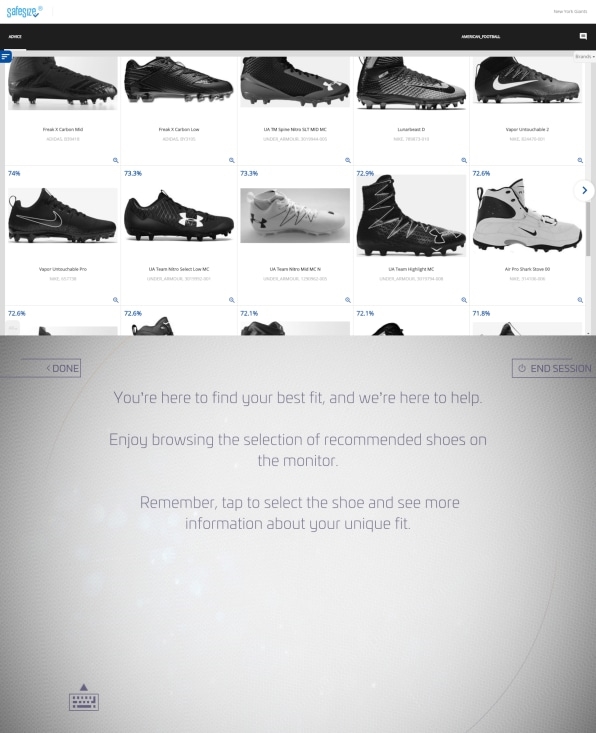
That’s because while the end customer is the player, the FitStation project is also a boon for team equipment managers. “When I talked to equipment managers,” Patty says, “the thing they love about it, is that it gives them credibility when they’re talking to the players” about the shoes they wear.
These athletes, she explained, are highly paid, and highly tuned to their bodies and the equipment they wear, yet they may feel committed to shoes that aren’t the best fit for them for all kinds of reasons. “It’s not easy to recommend a different cleat,” she says. “I have seen players not in the optimal cleat. This gives equipment managers a tool” based on science to recommend the right shoe.
And the science behind the recommendations is important in overcoming players’ tolerance for somewhat uncomfortable shoes that, for some reason, they had always liked, says Louis Kim, HP’s global head of immersive computing.
Currently, FitStation can only base its recommendations on actual fit. But Patty says that over time, the system will expand to take other factors into consideration, such as whether a player likes a stiff toe or a soft heel, whether they want the shoe for grass or turf, and even whether they’re a speed player like a receiver, or a linebacker. The two features most requested by players, she adds, are to show just shoes appropriate for a particular position and ones for specific surfaces.
At HP, the hope is that NFL project is just the start of good things to come, Patty and Kim say. They hope there might be partnerships with other sports leagues, and that the system will be set up in a few hundred shoe stores this year, with customers getting recommendations for the best running shoe for them as well as a custom 3D printed insole.
For now, though, this is about getting football players into the shoes that will serve them best. Neither the NFL nor HP think a perfectly fit cleat can prevent all injuries, but they hope it can make a real difference.
Fast Company , Read Full Story
(25)

